In this blog Sailabala Panda explores the profound interplay between India’s lush forests, its resilient inhabitants, and the urgent need for local governance by delving into the critical discourse surrounding deforestation, carbon emission, and the delicate balance between sustenance and sustainability based on her field experiences at PRADAN.
CONTEXT
India has a diverse range of forests and is home to 8% of the world’s flora and fauna. As per the India State of Forest Report-2021, India’s total forest and tree cover was 80.9 million hectares, which accounted for 21.71% of the geographical area of the country. These forests support the livelihood of nearly 200 million people who are dependent on food, fuelwood, fodder, and other forest produce. The culture and economy of these forest dwellers are deeply connected to these lands.
In the heart of India’s Central Tribal Belt, where indigenous communities have safeguarded the forest ecosystem for generations, a remarkable transformation is taking place. PRADAN, one of India’s biggest national-level NGOs, has been actively involved in the recognition and implementation of forest rights. The Scheduled Tribes and Other Traditional Forest Dwellers (Recognition of Forest Rights) Act, 2006 or the Forest Rights Act (FRA) – 2006, is one of the most important and popular entitlement-based laws enacted in India favoring tribal and other traditional forest dwellers’ rights over forest land (Box 1).
However, despite its intent, the Act’s implementation has been slow. As on 1 December 2022, overall rights recognized only 168 lakh acres out of 856 lakh acres, which is 19 .6 % of the total eligible forest area that is eligible to be recognized under FRA-2006 as Individual Forest Rights (IFR) or Community Forest Rights (CFR) (MOTA, 2023). Government agencies have started accelerating the work in this context PRADAN with support from Cadasta foundation has developed a mobile based app that is helping in land mapping and documentation to faster the IFR and CFR claim process under Forest Rights Act 2006. PRADAN is empowering forest dwellers to claim rights over forest land and is facilitating to develop local forest governance to protect, conserve, and sustainably manage their forests for social, economic, cultural, and ecological benefits.
|
Box 1: The Forest Rights Act – 2006 FRA-2006 has the following objectives:
|
The Consequences of Insecure Forest Rights
The lack of secure land rights has created a multitude of challenges, including inadequate grassroots forest governance and encroachment through commercial activities such as unsustainable woodcutting, conversion of forest land for non-forest use, and rampant forest fires. These issues have not only put the forest ecosystem at risk but have also resulted in a decline in sources of uncultivated nutritious safe food, non-timber forest produce, and biodiversity. Shockingly, between 2001 and 2022, India lost 2.19 million hectares of natural forest, equivalent to 1.11 Gt of carbon dioxide emissions (GFW, 2023).
 Tree cover loss in India from 2001 to 2022 Source: GFW 2023
Tree cover loss in India from 2001 to 2022 Source: GFW 2023
Between 30 January and 31 July 2023, there have been 11,298 forest fires in India (GFW, 2023). The loss of forests is not merely a loss of trees; it is a loss of food, fodder, income, biodiversity, and wildlife, with adverse impacts on climate and life on earth. More than 12 million hectares of forest are lost each year which is loss of forest equivalent to size of about one football pitch in every second. Hence securing forest rights and local forest governance are critical to halt further degradation of forests and to revive native forests.
PRADAN’S WORK ON FRA
Rationale
Working at the grassroots for nearly four decades with tribal and vulnerable women’s groups around sustainable livelihoods integrated with natural resource management, gender, governance, and access to rights/ entitlements, we realized that the lack of tenure security affects the poor in various ways. It affects their self-worth, identity, and they live in the fear of eviction/displacement. In most cases, the lands they use are not owned by them; so they don’t invest on land development. They also don’t receive government entitlements or support from schemes. We also realized that when a woman is in a functional household, it doesn’t matter who owns the land. However, when the household disintegrates, such as in the case of abandonment, widowhood, etc., women face serious consequences and become more vulnerable. On the other hand, when the poor have ownership of land, all other factors like identity, better land use, livelihood, income and convergence fall into place.
In our study in Rayagada district of Odisha in India, in partnership with Landesa (supported by BMGF), we found that 39% of households in the area are landless, recorded land holding per household was only 36%, and single women comprised about 35% of self-help groups (SHGs). The poor had access to forest land, government wasteland etc., but lacked rights on the land. Improving the lot of the poor without securing their land rights often impedes the achievement of development indices. Secure land rights for women, men, and the community are critical for social transformation.
Strategy
PRADAN adopts a six-pronged strategy to strengthen local forest governance. These are discussed below.
- Developing community forest governance: PRADAN has been empowering indigenous communities in claim making, post-claim management, and developing community forest governance for the protection, conservation and management of forest resources. It has mobilized indigenous communities to aggregate and sell their forest produce and supported the preservation of indigenous seeds, mother plants, sacred groves, heritage sites, etc., to enhance biodiversity and the ecology. All these have helped forest communities take ownership of the forest. PRADAN has also been facilitating local governance to prevent further forest degradation.
- Creating social capital: A pool of local youth from indigenous communities has been developed to serve as Community Cadres (Van Sathis) to create awareness on FRA -2006 and help forest dwellers in claim making, land mapping, preparation and implementation of Community Forest Resource Rights (CFRR) Management Plan, etc.
- Mapping forest lands with a digital tool: In collaboration with Cadasta Foundation, PRADAN developed a mobile-based Community Land Mapping and Demarcation Tool (CLMDT). The tool serves as a comprehensive solution, enabling forest dwellers to identify individual land parcels, document relevant data and evidence, resolve boundary conflicts, and determine the extent of land to be claimed under community forest rights. Local youth, trained by PRADAN’s experts and selected from within indigenous communities, play a pivotal role as social entrepreneurs, facilitating the mapping process with the active participation of both women and men. The tool ensures gender-segregated data and allows for offline and online functionality.
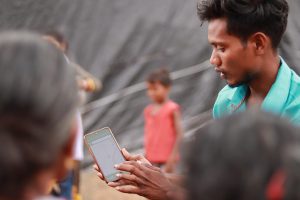 Technology adoption in land mapping and demarcation
Technology adoption in land mapping and demarcation
- Advancing Gender through FRA: PRADAN has integrated a gender perspective in FRA implementation and mobilizing gram sabhas (village councils) to accept IFR claims where women are the first claimant and the husband and family members are dependents. Specific focus has been on aiding single women within a household to get sole IFR titles, securing indigenous women’s user rights under CR, ensuring women are included in CFRR, capacity building of women in livelihood activities, and creating awareness on how they are eligible for different rights and entitlements through convergence.
- Partnership with Government: PRADAN has signed partnership agreements with the government, consulting them and enlisting their support and guidance in steps to address critical implementation gaps and bringing synergy among different actors to expedite FRA-2006 implementation.
- Developing knowledge material: PRADAN has developed Information, Education and Communication (IEC) materials, training modules, templates for claim-making, and preparation of Community Forest Resource Management Plan (CFRMP).
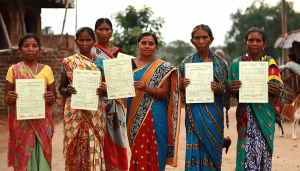 Single women with their land titles
Single women with their land titles
IMPACT AND BENEFITS
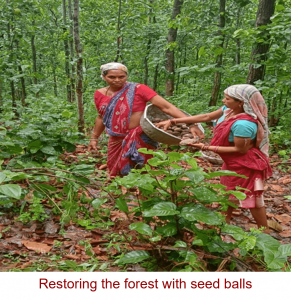 PRADAN is facilitating gram sabhas to prepare a Community Forest Resources Conservation and Management Plan (CFRCMP) for their forest. To execute the plan the gram sabha is making an execution committee called Community Forest Resource Conservation and Management Committee (CFRCMC). Gram sabhas are developing norms and rules to stop further degradation of forests, controlling tree felling, stopping commercial wood cutting for selling, controlling forest fires, stopping the conversion of forest areas for non-forest use, etc. They are collecting local indigenous seeds, preserving them and preparing seed balls to be sown in barren/less dense forest areas in order to restore forests.
PRADAN is facilitating gram sabhas to prepare a Community Forest Resources Conservation and Management Plan (CFRCMP) for their forest. To execute the plan the gram sabha is making an execution committee called Community Forest Resource Conservation and Management Committee (CFRCMC). Gram sabhas are developing norms and rules to stop further degradation of forests, controlling tree felling, stopping commercial wood cutting for selling, controlling forest fires, stopping the conversion of forest areas for non-forest use, etc. They are collecting local indigenous seeds, preserving them and preparing seed balls to be sown in barren/less dense forest areas in order to restore forests.
With support from the forest department, they obtain native forest saplings for afforestation. The continuous watch and ward by the community has led to denser forests in many villages, enhanced quality and production of Non-Timber Forest Products (NTFP), increased uncultivated safe and nutritious food, led to greater number of butterflies, birds, monkeys and peacocks in forests, and more water in streams enabling the cultivation of a second crop. The story of impact is given in Box 2.
|
Box 2: Impact of forest resource management- A Story of change Forest protection and restoration initiatives in the last 3 years have led to an increase in the production of wild mango, mushroom, leafy vegetables, banana, etc. Harvest of cowpea, pigeonpea, and caster from the adjacent IFR area also increased substantially. The intervention resulted in an additional income of around Rs 70,000 per household in the village. Water flow into the stream (from October to March) increased and the villagers are now able to cultivate an additional 8.5 acres for a second crop using Diversion Based Irrigation (DBI) system. An increase in wildlife like wild pig, peacock and other birds has also been observed in the forest. While the villagers of Andupadu are happy to see these changes, those in many nearby villagers are planning to initiate similar processes in their villages.
|
SCALING UP FOR A SUSTAINABLE FUTURE
While PRADAN’s efforts have already made a significant impact in few villages, it is essential to recognize that India has 1.7 lakh of forest villages awaiting similar interventions. The knowledge and experiences gained through this initiative must be shared widely to protect and sustain the Indian forest ecosystem. However, achieving this goal will require concerted efforts and resources to ensure the protection and conservation of India’s forests to keep them healthy in order to have an impact on multiple indicators of Sustainable Development Goals of 2030.
CONCLUSION
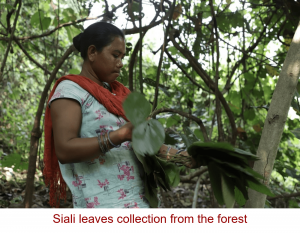 Forest dwellers play an essential role in the survival and sustainability of forest ecosystems. They maintain a deep connection with the forest on individual, communal, cultural, economic, and ecological levels. The forest is not just their habitat; it’s their precious home. FRA-2006 has provided a vital framework that empowers them to claim legitimate rights over the forest, fostering a sense of ownership, and eliminating the fear of forced displacement. In the forest fringe villages, the major catchment is the forest. Sustainable forest resource management can significantly help to increase the land and water status as well as meet diverse needs (food, fodder, etc.) of the community.
Forest dwellers play an essential role in the survival and sustainability of forest ecosystems. They maintain a deep connection with the forest on individual, communal, cultural, economic, and ecological levels. The forest is not just their habitat; it’s their precious home. FRA-2006 has provided a vital framework that empowers them to claim legitimate rights over the forest, fostering a sense of ownership, and eliminating the fear of forced displacement. In the forest fringe villages, the major catchment is the forest. Sustainable forest resource management can significantly help to increase the land and water status as well as meet diverse needs (food, fodder, etc.) of the community.
Our on-the-ground experiences have demonstrated that local forest governance holds the key to revitalizing forests. PRADAN has been at the forefront of promoting community forest governance, contributing to both forest conservation and socio-economic advancement. As we progress, it is imperative that we replicate and expand such initiatives that guarantee a sustainable future for India’s forests and ensure the overall well-being of forest inhabitants.
REFERENCES
GFW. 2023. Dashboard. Global forest watch. https://www.globalforestwatch.org/dashboards
MOTA. 2023. Performance Dashboard. Ministry of Tribal Affairs, Government of India. https://dashboard.tribal.gov.in/
 Sailabala Panda is a development practitioner with more than 18 years of experience in the development sector. She has worked with marginalized communities, specifically with poor rural women in some states of the Central India Tribal belt. She has ground experience in forming and nurturing women’s collectives, farm-based livelihoods, women farmer producer organizations, gender equality, forest rights, and sustainable forest resource conservation & management. She is a member of national and global professional networks working on sustainable protection, conservation and management of forest resources and women’s land ownership. Currently, she leads a Centre of Excellence on Forest at PRADAN. She can be contacted at sailapanda@pradan.net
Sailabala Panda is a development practitioner with more than 18 years of experience in the development sector. She has worked with marginalized communities, specifically with poor rural women in some states of the Central India Tribal belt. She has ground experience in forming and nurturing women’s collectives, farm-based livelihoods, women farmer producer organizations, gender equality, forest rights, and sustainable forest resource conservation & management. She is a member of national and global professional networks working on sustainable protection, conservation and management of forest resources and women’s land ownership. Currently, she leads a Centre of Excellence on Forest at PRADAN. She can be contacted at sailapanda@pradan.net

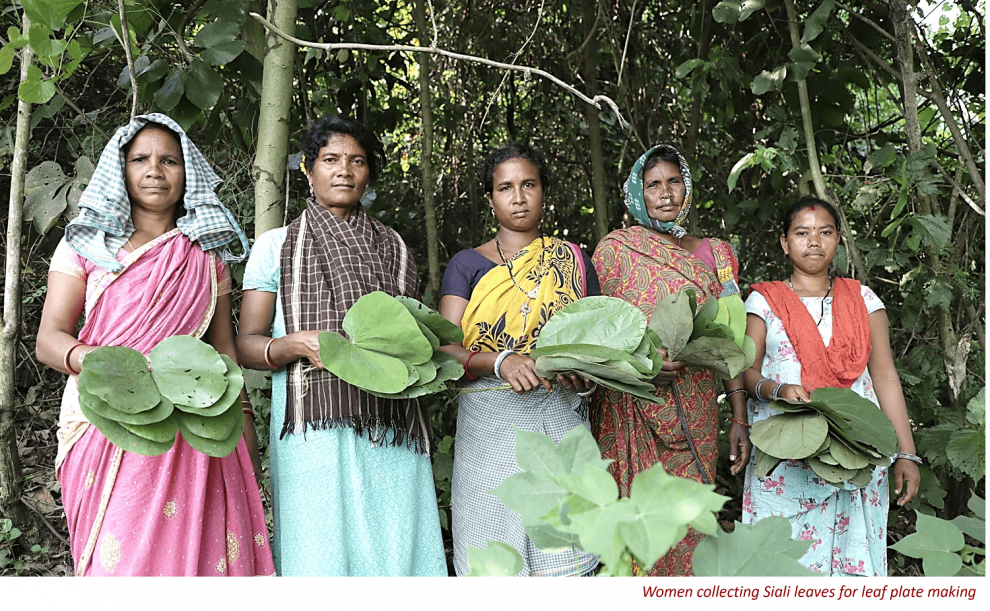


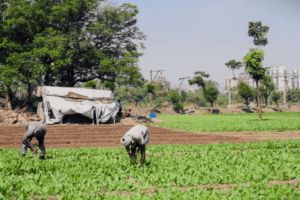

The blog quoting reports indicate that in India about 42 million trees are cut every day mainly for paper and Odisha is one of the three states (next to Madhya Pradesh and Uttar Pradesh) where maximum number of trees are cut down. It is in this context the efforts of PRADAN in increasing the forest cover through promoting Community Forest Governance and taking advantage of Forest Rights Act -2006 in Rayagada district of Odisha are praise worthy. This approach obviously resulted in forest conservation, increase in the production of fruits, vegetables, pulses, fodder etc and household income. It is necessary to replicate such type of initiatives in other areas if India has to achieve the target of restoring the forest cover of about 20 million hectares by 2030.
Congratulations to the development practitioner Sailabala Panda and thanks to AESA for making this useful blog accessible to us.